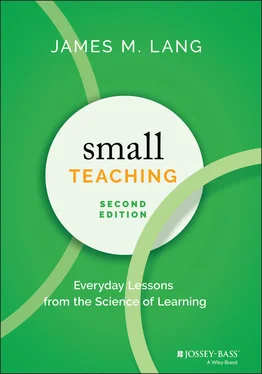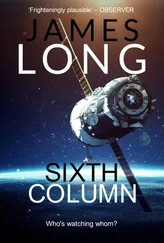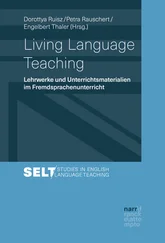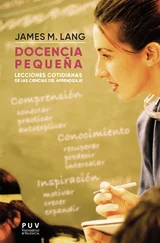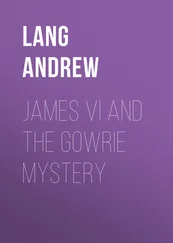In higher education we tend to go into class with our content guns blazing: I HAVE SOME STUFF TO TEACH YOU, LET'S GET STARTED! But the research on human learning that we will consider in this chapter suggests that the first step in the learning process should be to follow Anne's lead—not necessarily through her specific activity of asking pre-reading questions–but by asking students to engage in predictive activities of some kind or another before we expose them to new course content. Such activities could include inviting students to answer questions about what they are about to learn or experience, but could also include asking students to solve problems that are beyond their current ability level or to try their hand at a new skill before they have been given any formal instruction. This approach can seem counterintuitive since it turns the normal teaching sequence on its head. The operating assumption of many teachers runs like this: First I teach them the material, then I have them answer questions or solve problems with it. Read the story about polar bears, and then ask them where polar bears live. Give students a lecture on poetry, and then have them interpret a poem. Show students how to solve a particular type of math problem, and then give them one to solve on their own. But learning research suggests something quite different. It tells us that asking students to use their existing knowledge and skills to struggle with the material before we teach it can provide a robust foundation for deeper learning.
Providing opportunities for students to undertake this struggle doesn't take much time or effort, which is why it makes an ideal place to start a book on small teaching: just a few minutes at the beginning of a class period or a unit or even a course has enormous potential to improve both student learning and your teaching.
To understand how and why predictive activities support learning, consider first an elegant series of experiments conducted by three researchers at UCLA (Kornell, Jenson Hayes, and Bjork 2009). The authors asked subjects in one of these experiments to memorize a series of loosely connected word pairs, such as whale–mammal . One group of the subjects was given 13 seconds to study each word pair; the other group was given 8 seconds to see only the first word and to make a prediction about the second, after which they had 5 seconds to see the full word pair. Since the second word of the pair was linked to the first, but only one of many possibilities (since you might well guess sea or ocean or large if you saw only the word whale ), participants typically guessed the second half of the pair incorrectly. Note also that the subjects in the second (prediction) group had only 5 seconds to view the correct answer, so 8 seconds less than those in the first (nonprediction) group. Yet in spite of this shorter study time, and in spite of the fact that subjects in the second group frequently predicted the second half of the word pair incorrectly, the subjects in the second group performed significantly better than those in the first group when they were asked to recollect the word pairs on a subsequent exam: 67% accuracy in the second group versus 55% in the first. The unsuccessful prediction attempts in the experimental group, the authors explain, “were, remarkably, more effective than was spending the same time studying the answer to be recalled later” (p. 994). In other words, taking a few seconds to predict the answer before learning it, even when the prediction was incorrect , seemed to increase subsequent retention of learned material. This was true even when that prediction time substituted for—rather than supplemented—more conventional forms of studying.
The results of laboratory experiments like this one prompted another group of researchers, led by cognitive psychologist Elizabeth Bjork, to see whether they could reproduce the positive learning effect of prediction in an actual classroom (Carey 2014b). The researchers gave students in Bjork's introductory psychology class short multiple-choice pretests before some of the lectures in her course. Since the pretest questions asked them about material that had not yet been covered, the students performed about as well on the pretests as they would have from guessing randomly—again, as in the laboratory experiment, they made plenty of wrong predictions. Lectures on the subject matter followed immediately after the pretests, so the students received quick feedback on their answers. At the end of the term, the students took a final exam that contained multiple-choice questions similar to the ones on the pretests. The results paralleled the results of the laboratory experiment almost exactly: students performed around 10% better on questions from the subject areas in which they had been pretested than on those on which they had not. Bjork concluded from this experiment that “giving students a pretest on topics to be covered in a lecture improves their ability to answer related questions about those topics on a later final exam” (Carey 2014b). Note, of course, that even though the vocabulary has changed slightly here—from prediction to pretesting —the cognitive activity is similar: asking learners to give answers to questions or anticipate outcomes about which they do not yet have sufficient information or understanding. They are trying before they are ready.
Before we explore the reasons that prediction boosts learning, consider one final example of prediction in higher education, this one from an online environment (Ogan, Aleven, and Jones 2009). Three researchers from Carnegie Mellon University developed an online tutoring program that demonstrated the power of predicting in helping students improve their intercultural understanding in hybrid language courses. The two French courses described in the experiment each met once a week in a face-to-face environment, but otherwise the students did their course work online. Part of the goal for these courses was to help students develop what the authors called “intercultural competence, that is, the ability to think and act in culturally appropriate ways” (p. 268). This can be an extremely difficult skill to develop, as anyone who has ever traveled in a foreign country can likely attest. The ability to speak the language of a foreign country does not necessarily guarantee your ability to understand how to hail a cab, tip in a restaurant, or approach a stranger in the Paris Metro to ask which train will take you to the airport in time to catch your flight home (as I once discovered, to my great sorrow). So, in this experiment we are moving beyond the realm of simply knowing and retaining information into the broader realm of comprehension—that is, understanding how to use and apply in other contexts the information you have learned. The intercultural competence sought by these instructors requires learners to think and act with their knowledge, not just report it back.
To help students acquire this type of deeper comprehension, two experts in computer-assisted learning worked with a language professor to develop an online tutoring program based on the use of film clips. In the control condition of this experiment, students were shown film clips highlighting cultural attitudes or behaviors that are normally taught in introductory French classes. As the students watched the short film clips, they had the opportunity to take notes on what they saw. The students in the experimental group, by contrast, were given the opportunity to use the power of prediction to improve their learning. Their film clips would pause at key moments, ask them to make a prediction about what was about to unfold, and then require them to ponder what actually happened once the clip had finish: the authors described their three-part sequence with the catchy phrase pause–predict–ponder . The prediction the students had to make actually came from a drop-down menu of choices, but then they had open text boxes to explain why they made that prediction. After they had watched the remainder of the clip, they had to answer a simple question about whether or not their prediction was correct and then respond to prompts to help them reflect on their prediction, such as: “If so [i.e., if your prediction was correct], did you see anything you didn't expect about the French culture? If not, what happened that you didn't predict?” Students in both conditions concluded their viewing of the film clips with required postings to a discussion board to allow them to process and review what they had seen.
Читать дальше
